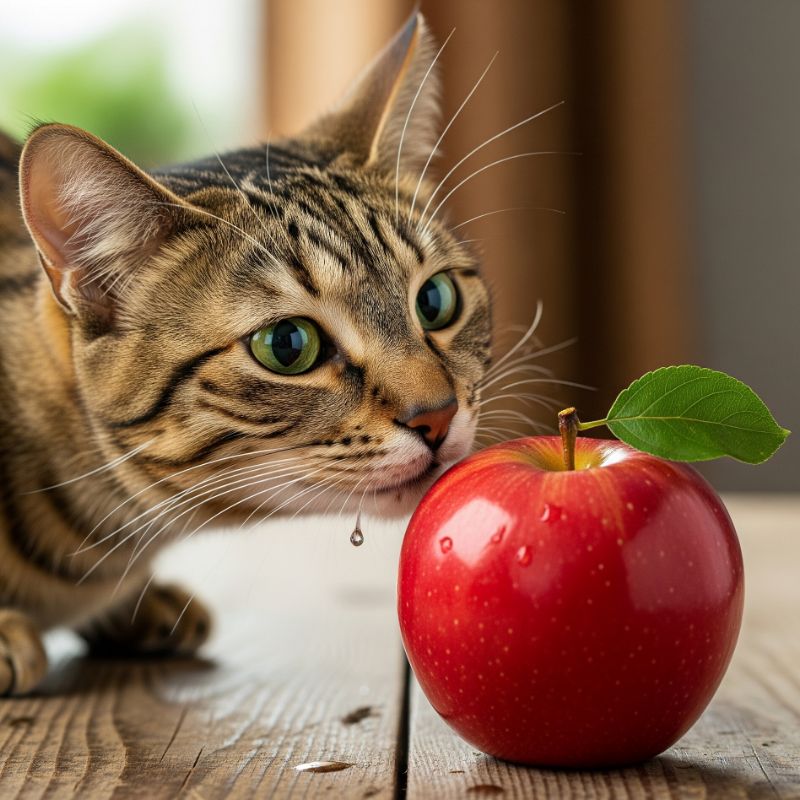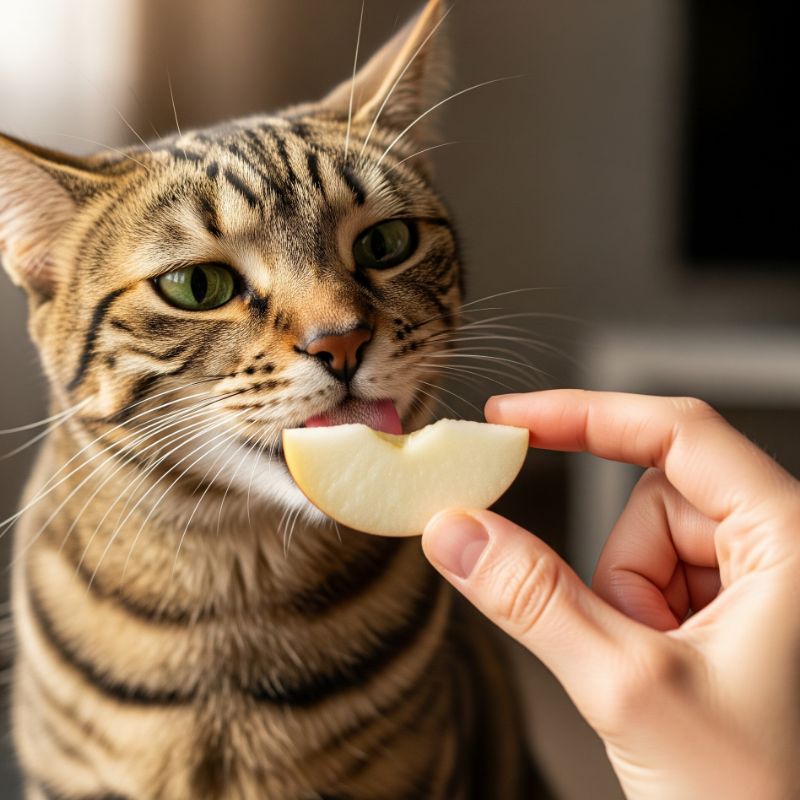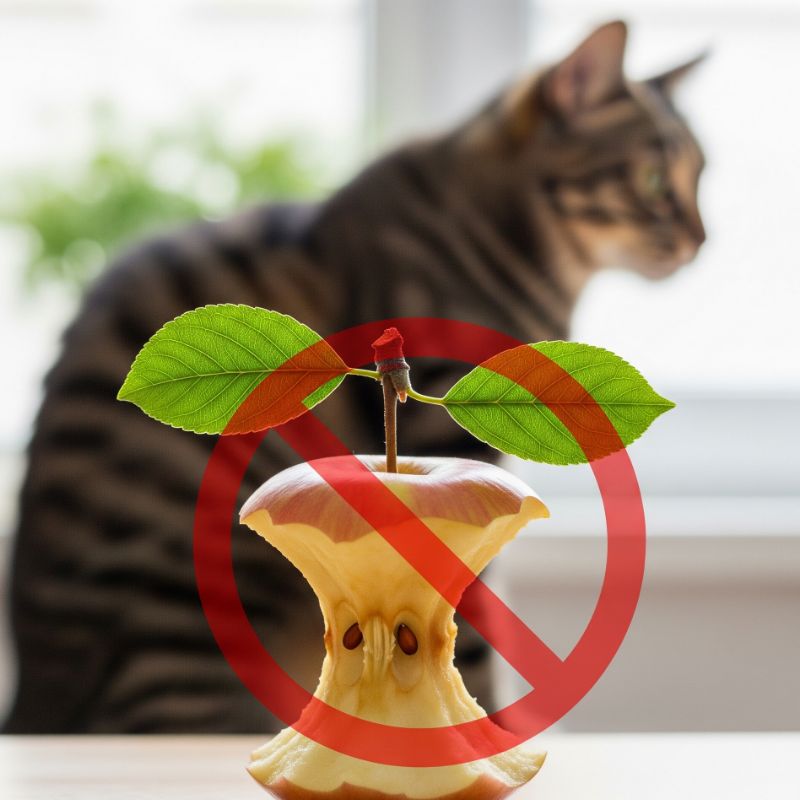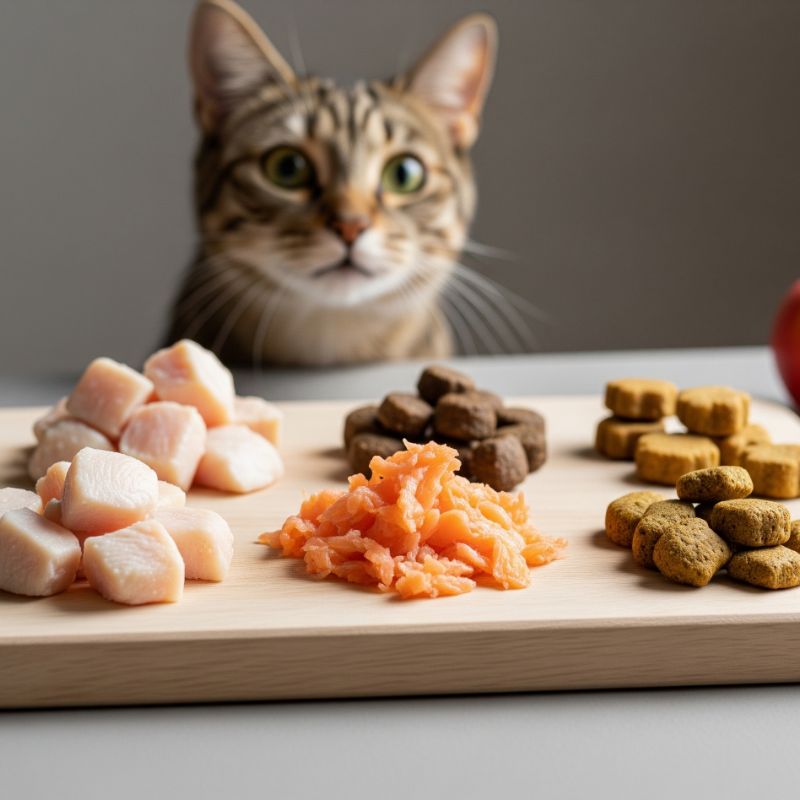As you crunch into a crisp, juicy apple, you might notice your feline friend showing some interest. It’s natural to wonder if you can share a slice of this healthy human snack. But when it comes to our pets, what’s healthy for us isn’t always safe for them. So, let’s answer the crucial question: can cats eat apples? The answer is a mix of yes and no, and the details are extremely important for your cat’s safety.
Can Cats Eat Apples?
Yes, cats can eat the flesh of an apple. The fleshy part of the fruit is not toxic to cats and can be offered as a small, occasional treat. However, other parts of the apple are dangerous. The seeds, leaves, and stem of an apple contain cyanide and are poisonous to cats, so they must always be removed before you even consider sharing a piece.
The Dangerous Parts: What Makes an Apple Toxic?
The primary danger of apples lies in specific parts of the fruit. A compound called amygdalin is present in the seeds, which, when chewed or digested, degrades into hydrogen cyanide. While a single seed is unlikely to cause fatal poisoning, it’s a risk that should never be taken. Ingesting multiple seeds could lead to serious health issues.
- Apple Seeds: Contain cyanide; are toxic and must be removed.
- Stem and Leaves: Also contain cyanide and should be discarded.
- Core: The tough core can be a choking hazard.
It’s vital to differentiate between risks. While apple seeds are the specific danger here, some human foods are toxic in their entirety. For example, the answer to can cats eat grapes is a definitive no, as the entire fruit can cause kidney failure.
Do Apples Offer Any Health Benefits for a Cat?
For a cat, apples are not a significant source of nutrition. As obligate carnivores, they get everything they need from a high-quality, meat-based diet. However, the flesh does contain some minor benefits.
| Nutrient (per small slice) | Value / Benefit for a Cat |
|---|---|
| Fiber | Can aid in digestive health in small amounts. |
| Water Content | High; can provide a small amount of hydration. |
| Vitamins (A & C) | Present, but cats produce their own Vitamin C, so it’s not essential. |
| Sugar | High; this is a significant downside. |
What Are the Risks and Downsides of Apples?
Besides the toxic seeds, the main downside of apple flesh is its high sugar content. A cat’s digestive system is not designed to process sugars effectively. Giving too much apple can lead to:
- Digestive upset, including diarrhea.
- Unnecessary calories, contributing to weight gain and obesity over time.
- Potential issues for diabetic cats, for whom it should be completely avoided.
Many human treats carry similar risks. For instance, the discussion around can cats eat peanut butter often focuses on its high fat content, which, like sugar, provides empty calories and can cause stomach problems.
How Should I Safely Prepare an Apple for My Cat?
If you choose to offer your cat a taste of apple, following these preparation steps is mandatory for their safety.
- Wash the Apple Thoroughly: Rinse the outside of the apple to remove any pesticides or wax.
- Peel the Skin: While the skin isn’t toxic, it can be difficult for a cat to digest. It’s best to remove it.
- Remove ALL Seeds, the Stem, and the Core: This is the most critical step. Cut the apple into slices and meticulously remove every single seed and the entire core structure.
- Cut into Tiny Pieces: Dice the apple flesh into very small, bite-sized cubes to prevent any risk of choking.
Some human foods are simpler to share. For example, when asking can cats eat rice, the preparation is just boiling it plain, making it a simpler (though still not nutritious) option.
What Is a Safe Serving Size?
A safe serving size of apple for a cat is very small. One or two tiny, thumbnail-sized cubes is more than enough for a treat. It should not be a daily snack but rather a rare, occasional offering. Treats should never make up more than 10% of your cat’s daily caloric intake, and with a sugary item like an apple, it’s best to stay well below that.
What Are Better Treat Alternatives?
While a tiny piece of apple is okay, there are far better and more species-appropriate treats for your cat. Healthier alternatives include:
- Small pieces of cooked, unseasoned meat or fish.
- Commercially formulated feline treats.
- Freeze-dried meat snacks.
Even other fruits might be a better choice. For example, can cats eat blueberries is a question with a similar “yes, in moderation,” but blueberries have the added benefit of antioxidants with less sugar per serving. Meanwhile, some snacks are just fillers, which is the main takeaway when owners ask can cats eat popcorn. You can learn more about toxic foods for pets from the ASPCA Animal Poison Control Center.
Conclusion
So, can cats eat apples? The flesh is a safe, occasional treat when prepared meticulously, but the seeds are a toxic risk that must be eliminated. Given the high sugar content and the fact that cats don’t need fruit in their diet, it’s a snack that falls firmly into the “can, but probably shouldn’t” category. By prioritizing meat-based treats, you’ll always be making a healthier choice for your carnivorous companion.
Frequently Asked Questions About Cats and Apples
Here are quick answers to some common follow-up questions about cats and apples. This information is for general guidance and is not a substitute for professional veterinary advice.
1. Can cats drink apple juice?
No, you should not give your cat apple juice. It is a highly concentrated source of sugar without any of the fiber from the apple flesh. This can easily cause stomach upset and offers no health benefits.
2. What happens if my cat eats one apple seed?
A single apple seed is unlikely to cause a lethal dose of cyanide poisoning in an average-sized cat. However, it’s still toxic, so you should monitor your cat closely for any signs of distress and contact your vet for advice.
3. Is applesauce safe for cats?
Plain, unsweetened applesauce without any additives is not toxic, but it’s not recommended. Most commercial applesauces contain added sugars, preservatives, or other flavorings that are unhealthy for cats.




